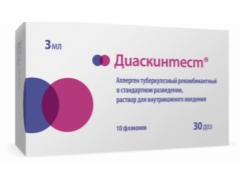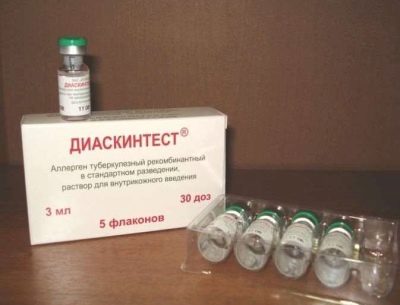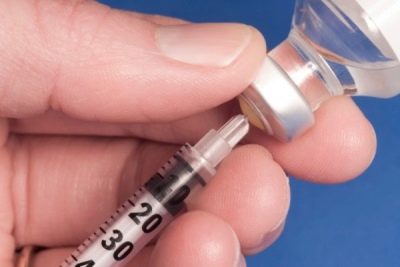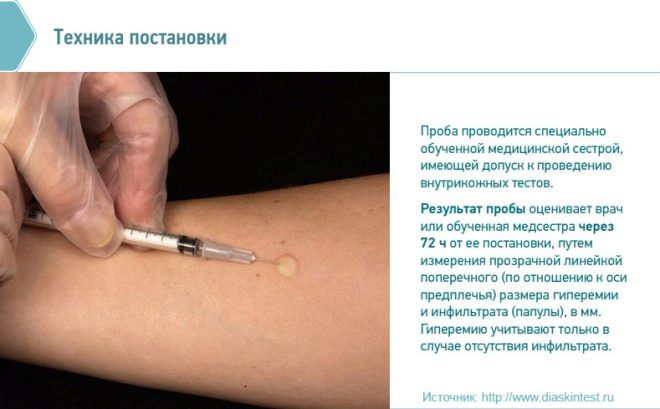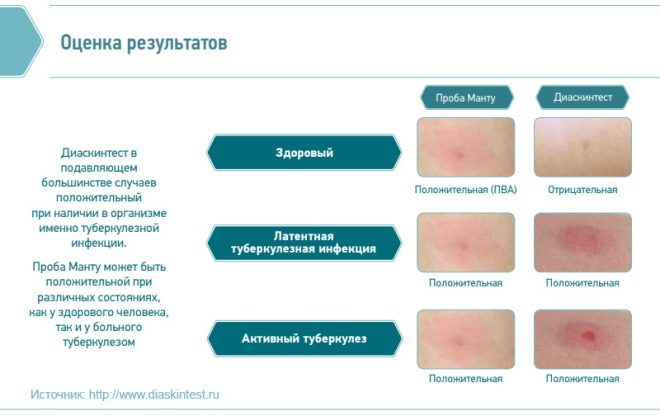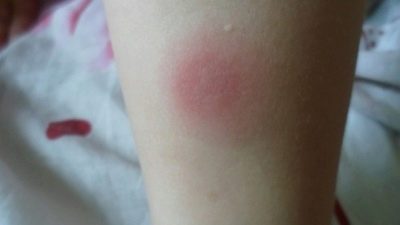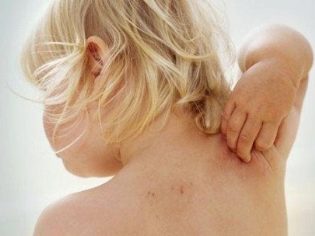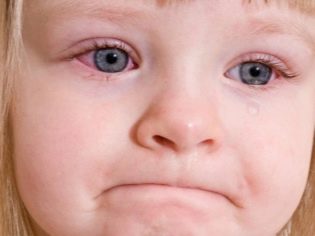"Diaskintest" for children: from the characteristics of the application to the assessment of results
A drug called Diaskintest is used in the diagnosis of tuberculosis. It is used to perform a skin test, which is able to confirm the carriage of mycobacteria or active tuberculosis. It is often used as an alternative to the Mantoux test or to refine its results.
Dosage form and composition
"Diaskintest" is a solution that must be injected intradermally. It is in a glass bottle in a volume of 3 ml, and one box contains 1, 5 or 10 bottles. The medicine itself is clear, without any coloring.
The solution contains a recombinant protein in which there are two antigens. This protein is obtained using modified colibacilli, then diluted with a special buffer solution, to which is added a preservative (phenol).
In addition, the preparation has sodium chloride, sterile water and polysorbate 80, as well as sodium phosphate and potassium. The amount of the active component in a single dose of Diaskintest is 0.2 μg. At the same time, one dose is 0.1 ml, that is, one bottle contains 30 doses.
The test is done only in a medical institution, for example, in a municipal polyclinic, a private medical center or a tuberculosis dispensary. The drug from the opened vial should be used within two hours.
Diaskintest's shelf life is 2 years, and the solution should be stored at a temperature of + 2- + 8 degrees.
How does it work?
The protein present in Diaskintest is a tuberculous allergen. The antigens it contains are found in the pathogenic mycobacteria that cause tuberculosis. Thanks to these ingredients, injection with a solution helps to identify the immune response to the causative agent of tuberculosis.
After injection into the skin of a child infected with mycobacteria or a child with tuberculosis, a specific reaction occurs. It is referred to as delayed-type hypersensitivity. If the body is already “familiar” with mycobacteria, then the production of antibodies begins, which leads to the appearance of a small compaction (it is called papule or infiltration) or redness.
Since there is no pathogen itself in the preparation, and only proteins isolated from mycobacteria are present, it is impossible to become infected with tuberculosis due to Diaskintest. In this regard, the solution is not at all dangerous.
Test accuracy
The sensitivity of the sample is estimated at 78–96%, that is, in the presence of tuberculosis in 4–12% of patients, the test may turn out to be false negative. Most often this is due to immunodeficiency states, when immune cells do not respond to the allergen injected.
As for the specificity of the method, it is about 99%. This means that incorrect positive results occur in approximately 1% of the subjects. They are caused by a reaction to other types of mycobacteria that are not related to the causative agents of tuberculosis infection that may be present in the body.
When is it used?
Diaskintest is recommended for detecting tuberculosis at any age. To children such test is appointed from one year. This test is used:
- if there is a suspicion of tuberculosis (there are clinical symptoms) or there is a high risk of its development (there was contact with a patient with an open form);
- if the child was given a Mantoux test at school, it turned out to be positive, but there are doubts that this is an allergic reaction to BCG or to the components of the solution;
- if a small patient received a treatment for tuberculosis and you want to determine how effective it was.
Since the use of Diaskintest is unable to confirm the immunity to tuberculosis developed after BCG, such a test cannot be used to select children who need revaccination. This “Diaskintest” differs from the Mantoux test, which is used to confirm immunity to tuberculosis. For this reason, replacing Mantoux using "Diaskintest" is not worth it.
For more accurate diagnosis, such tests are recommended to combine.
In addition, Mantu shows tuberculosis at an early stage, and the test with Diaskintest cannot do this. And therefore in situations where Mantoux was positive, but the Diaskintest made after it did not give a positive reaction, it is recommended to do another test after 2 months in order not to miss the onset of the infection process.
Contraindications
"Diaskintest" is not used if the child is sick with some kind of acute infection (he coughs, he has a runny nose, fever and other symptoms), as well as within 1 month after recovery. The solution does not apply to any diseases with a chronic course, if they become aggravated (first, you need to treat such an aggravation, and then make a sample). A contraindication for such a drug is also an allergic condition, in which the symptoms of allergy are first eliminated and only then Diaskintest is administered.
An obstacle to the test will be any skin disease, in which there are pustules, rashes and other skin lesions in the forearm area. If a child visits an institution where quarantine for chickenpox or another infection has been declared, Diaskintest is used only after the quarantine period is completed.
If there is a risk that the child has become infected with the flu or other acute respiratory infections, it is also safer to postpone the test so as not to get a false positive result.
How is the test done?
The solution with the solution is prescribed by the doctor, and the injection should be done by a qualified nurse who has the right to perform intracutaneous tests. Diaskintest should be administered only intracutaneously - it is unacceptable to inject into a muscle or otherwise.
The solution is collected by a tuberculin syringe, which has a thin short needle with an oblique cut. Before you make a test, be sure to specify the date of manufacture and shelf life. Two doses of the agent are drawn into the syringe at once, after which the extra drug is released so that only 0.1 ml is left inside.
The child is in a sitting position during the injection. The injection is done in the region of the forearm - in the middle third. First, the skin in this place is treated with alcohol, then it is stretched and an injection is performed, which should result in a papule. Normally, such a papule is pale, looks like a “lemon peel”, and its diameter is 7–10 millimeters.
After the injection, the health worker must record in the documents what kind of drug was injected (its series, manufacturer, expiration dates), when and where it was pricked. Later information about the test result is added to this record.
If the child is prone to allergies or he has any allergic diseases, Diaskintest should be administered in parallel with the use of antihistamines. Such drugs are advised to start giving five days before the injection. After the injection, they are used for 2 more days after the test.
Another preparation for the introduction of "Diaskintest" is not needed.
How often can a test be done?
If you use "Diaskintest" to replace the Mantoux test, then the frequency will be the same, that is, once a year.In the absence of BCG in a child, more frequent examinations are recommended - every six months. It should be tested twice a year for chronic diseases, for example, for lung diseases, stomach ulcers or diabetes mellitus.
If the result is negative, then re-enter "Diaskintest" allowed after two months. If the test was positive, then it can be repeated after any period of time when necessary.
Can I wash and wet my hand?
The injection site after the test is wet. If a child is given Diaskintest, he may bathe, but it is better not to put any detergents on his hand, and not to rub the injection site with a washcloth.
In addition, it is not recommended:
- stick a patch in place of the sample;
- bandage your arm;
- handle the trace of the injection with green paint or other medicine;
- lubricate the injection site with any cosmetic;
- scratch and rub your hand;
- go to the bath or sauna;
- sunbathe in direct sunlight;
- swimming in the pool or swimming in a natural pool;
- engage in active sports;
- for a long time to stay in the frosty air.
Such restrictions are due to the fact that, due to high or low temperatures, contact with dirty water, cosmetics, or later, the site of the allergen can become infected and inflamed, leading to an incorrect result.
When and how to check the result?
The sample with Diaskintest should be evaluated 72 hours after the injection. She is checked by either the nurse or the doctor, measuring the transverse size of the infiltrate. To measure using a transparent ruler, and the result is recorded in millimeters.
If there are no papules (infiltration), but there is an area of redness, then the dimensions of the hyperemia are measured. If the infiltration is present, but the skin around it is red, then the hyperemia is not taken into account, and only papule is measured.
What is the result?
The sample with Diaskintest is defined as:
- negative - if there is no redness, and the papule is completely absent;
- positive - when there is an infiltrate of any size;
- doubtful - if papules are not visible, but there is hyperemia.
If only a trace of the injection is visible on the child’s arm, the dimensions of which do not exceed 2 mm, such a test is also considered negative.
What does a negative reaction mean?
Such a result occurs if:
- the child is not infected with mycobacteria;
- the child was previously infected, but the infection is inactive;
- the child was successfully treated for tuberculosis.
A negative reaction after a positive Mantoux test is probably confirmation that the child reacted to Mantoux with an allergy or a false positive result of such a test was due to the recent BCG vaccination.
However, the absence of papules is not always a favorable sign. Any changes in the skin of the forearm after Diaskintest may also occur with serious impairment of immune function when the infection is difficult.
In addition, a negative reaction is possible at the very beginning, if the child has only become infected with mycobacteria, but his immune system has not yet responded.
Actions with a positive reaction
A positive result on Diaskintest indicates that the child’s body has already become “acquainted” with mycobacteria. Depending on the size of the infiltrate, the positive reaction is divided into:
- weakly expressed - if the papule is not more than 0.5 cm;
- moderately pronounced - if the diameter of the infiltrate is from 5 to 9 mm;
- pronounced - if the size of the papule is from 10 to 14 mm.
In the case when the infiltrate is very large (its diameter is more than 15 mm), they speak of a hyperergic reaction. So called and the presence of necrotic changes or rash in the area of injection of the solution. If a child has swollen lymph nodes or lymphatic vessels, these are also signs of a hyperergic reaction, even if the papule size is small.
If the reaction is assessed as positive, the child is sent for further examination in order to clarify the diagnosis of "tuberculosis", because the test can not accurately distinguish the active infectious process from simple carriage.
To clarify the diagnosis, blood and urine tests should be done, fluorography or x-rays of the lungs, ultrasound and other examinations should be done. The same measures are taken in case of doubtful test result.
Side effects
Sometimes a non-specific allergic reaction can occur on Diaskintest. Often it is represented by redness at the injection site, occurring almost immediately after the test. By the time the result is assessed (on day 3), as a rule, such hyperemia passes and does not interfere with decoding. Other symptoms of an allergy to the solution are: itching, redness of the conjunctiva, urticaria, swelling of the nasal mucosa, and so on. For such complications, an antihistamine should be given to the patient.
In some children, after the injection, the body temperature rises for a while, a headache appears, and the state of health worsens. Such a general reaction is rare and usually takes place on its own within a few hours (less often within a few days). Edema, bruise or an abscess can be distinguished from local negative reactions to Diaskintest.
If the injection site is swollen and begins to suppuce, you should immediately show the baby to the doctor, as this indicates that bacteria have entered the wound.
Drug interaction
"Diaskintest" does not affect the treatment of drugs taken orally. However, there are some limitations for such a sample and prophylactic vaccination. If the child is scheduled for vaccination, then Diaskintest should be administered before it. In case of a negative reaction, vaccination can be performed immediately after the test.
If the baby has been given some kind of prophylactic vaccination, the test is allowed not earlier than one month after the vaccination.
Reviews
Generally, positive reviews can be read about the use of “Diaskintest” in childhood, because with this medicine it is possible to determine whether a child has tuberculosis.
The sample is considered more informative compared with Mantoux, but its high price is attributed to the minuses.
Also, some young patients developed adverse reactions in response to the drug.
More information about the sample "Diaskintest" you can see in the program "Live is great."
